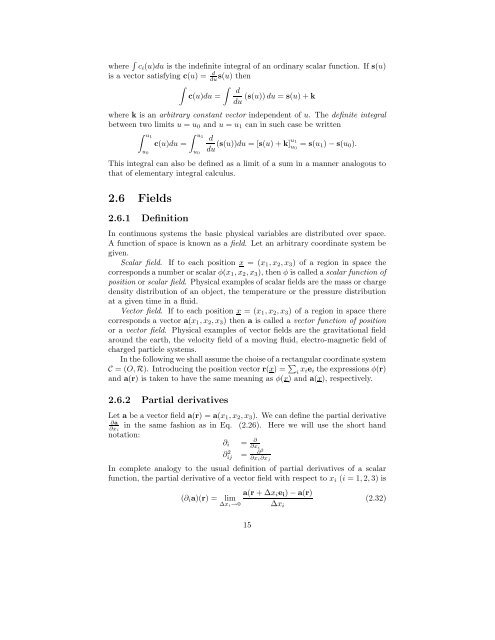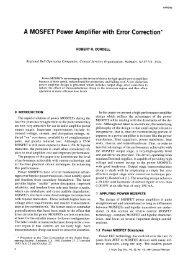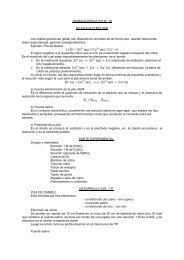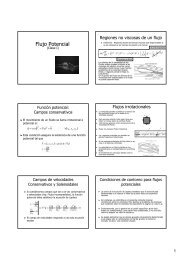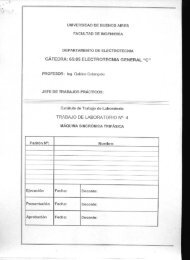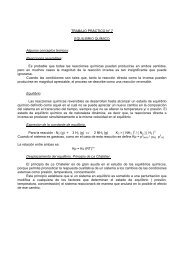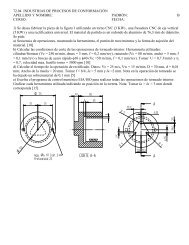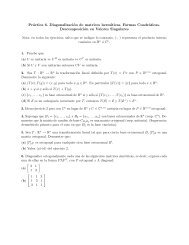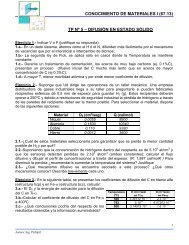Introduction to vector and tensor analysis
Introduction to vector and tensor analysis
Introduction to vector and tensor analysis
Create successful ePaper yourself
Turn your PDF publications into a flip-book with our unique Google optimized e-Paper software.
where ci(u)du is the indefinite integral of an ordinary scalar function. If s(u)<br />
is a vec<strong>to</strong>r satisfying c(u) = d<br />
dus(u) then<br />
<br />
d<br />
c(u)du = (s(u)) du = s(u) + k<br />
du<br />
where k is an arbitrary constant vec<strong>to</strong>r independent of u. The definite integral<br />
between two limits u = u0 <strong>and</strong> u = u1 can in such case be written<br />
u1<br />
u1<br />
d<br />
c(u)du = (s(u))du = [s(u) + k]u1 u0 du = s(u1) − s(u0).<br />
u0<br />
u0<br />
This integral can also be defined as a limit of a sum in a manner analogous <strong>to</strong><br />
that of elementary integral calculus.<br />
2.6 Fields<br />
2.6.1 Definition<br />
In continuous systems the basic physical variables are distributed over space.<br />
A function of space is known as a field. Let an arbitrary coordinate system be<br />
given.<br />
Scalar field. If <strong>to</strong> each position x = (x1, x2, x3) of a region in space the<br />
corresponds a number or scalar φ(x1, x2, x3), then φ is called a scalar function of<br />
position or scalar field. Physical examples of scalar fields are the mass or charge<br />
density distribution of an object, the temperature or the pressure distribution<br />
at a given time in a fluid.<br />
Vec<strong>to</strong>r field. If <strong>to</strong> each position x = (x1, x2, x3) of a region in space there<br />
corresponds a vec<strong>to</strong>r a(x1, x2, x3) then a is called a vec<strong>to</strong>r function of position<br />
or a vec<strong>to</strong>r field. Physical examples of vec<strong>to</strong>r fields are the gravitational field<br />
around the earth, the velocity field of a moving fluid, electro-magnetic field of<br />
charged particle systems.<br />
In the following we shall assume the choise of a rectangular coordinate system<br />
C = (O, R). Introducing the position vec<strong>to</strong>r r(x) = <br />
i xiei the expressions φ(r)<br />
<strong>and</strong> a(r) is taken <strong>to</strong> have the same meaning as φ(x) <strong>and</strong> a(x), respectively.<br />
2.6.2 Partial derivatives<br />
Let a be a vec<strong>to</strong>r field a(r) = a(x1, x2, x3). We can define the partial derivative<br />
in the same fashion as in Eq.<br />
notation:<br />
(2.26). Here we will use the short h<strong>and</strong><br />
∂a<br />
∂xi<br />
∂i = ∂<br />
∂xi<br />
∂ 2 ij<br />
= ∂2<br />
∂xi∂xj<br />
In complete analogy <strong>to</strong> the usual definition of partial derivatives of a scalar<br />
function, the partial derivative of a vec<strong>to</strong>r field with respect <strong>to</strong> xi (i = 1, 2, 3) is<br />
a(r + ∆xiei) − a(r)<br />
(∂ia)(r) = lim<br />
∆xi→0 ∆xi<br />
15<br />
(2.32)


